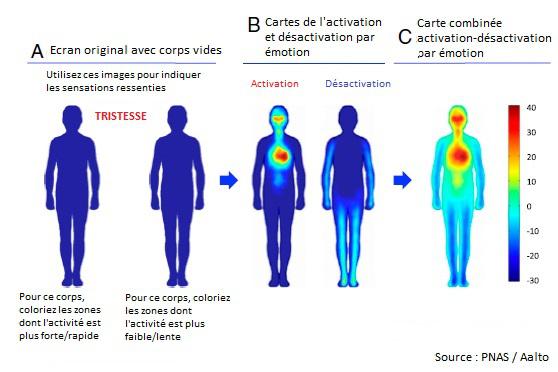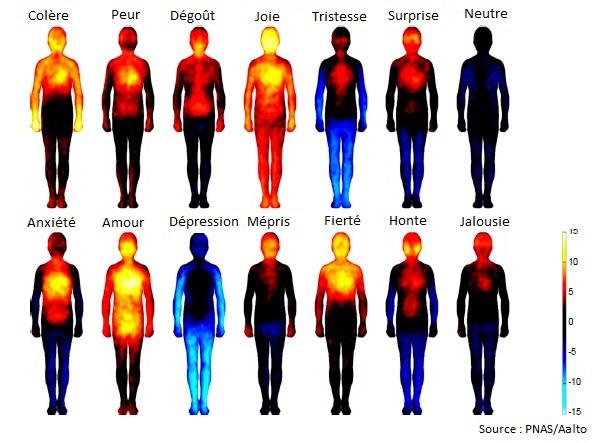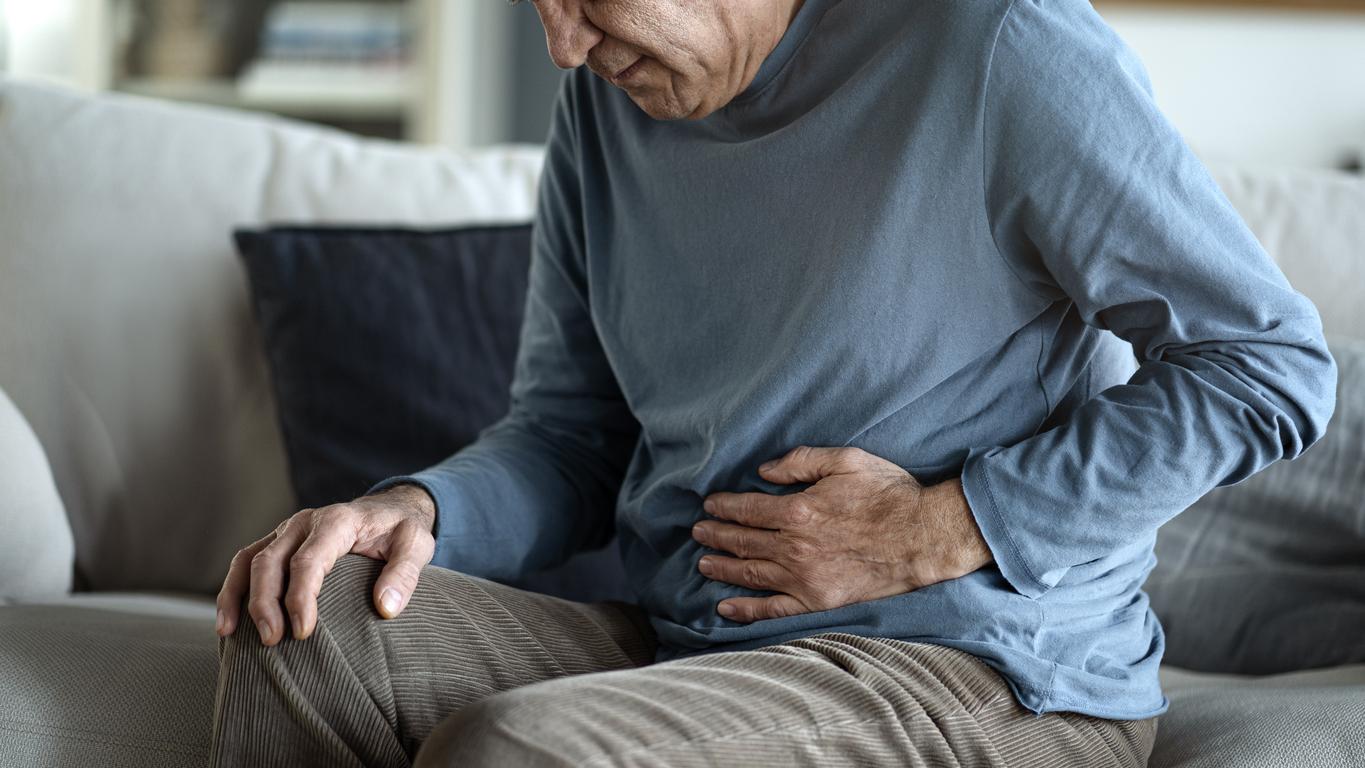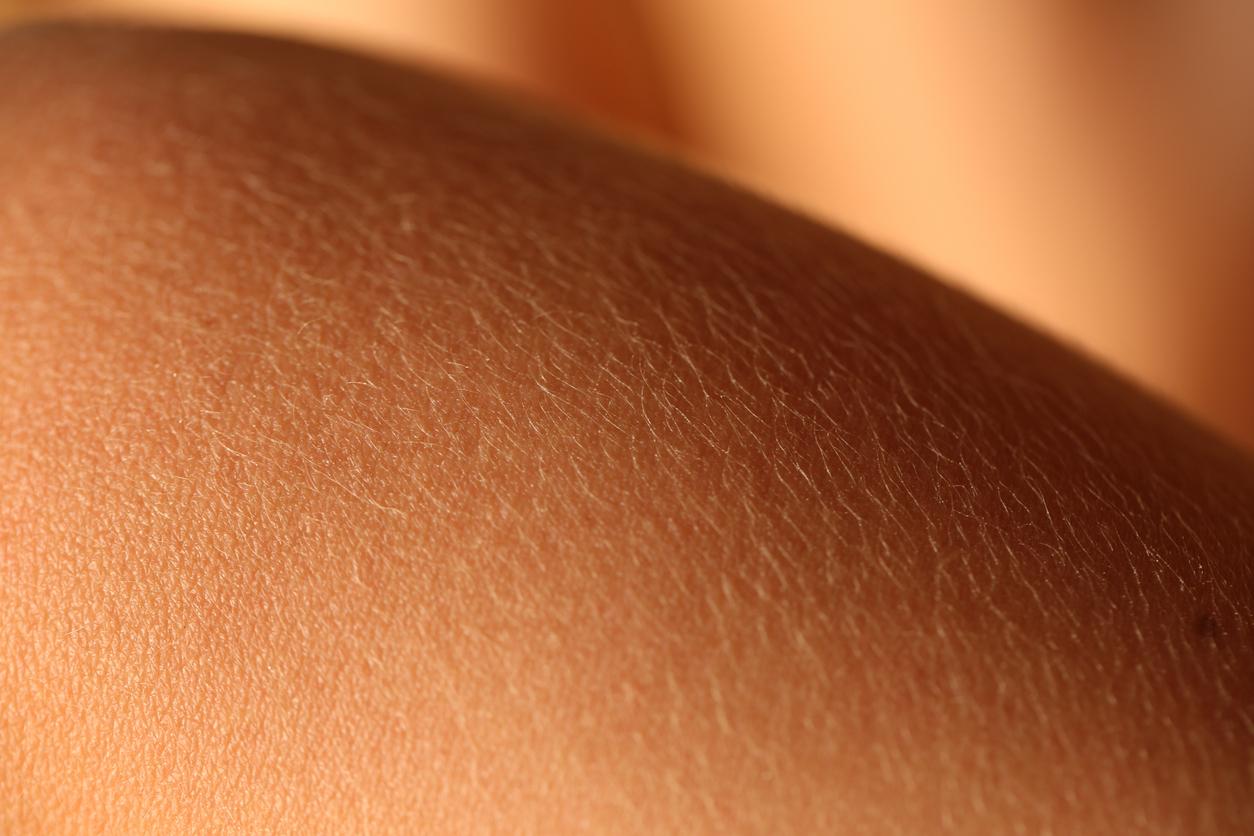Emotions such as fear or anger are accompanied by physical sensations. Finnish researchers have just drawn up the body map of emotions.

Stomach knot, throat tight, chills in the back or a lump in the stomach … All these expressions are used to describe the physical sensations linked to an emotion. Are they the reflection of a biological reality? Can we map the emotions? To answer these questions, a team from the University of Aalto (Finland) attempted to classify the body’s reactions in relation to a range of emotions. Their results appeared in the journal Proceedings of the National Academy of Sciences (PNAS) freely accessible.
Color according to the sensations
700 people were interviewed, in Sweden, Finland and Taiwan. They experienced different emotions using narratives, images, films… These participants then colored a diagram of the human body with different colors: red for increased sensation, blue for less activity. If they didn’t feel anything, they left the area empty.

Thanks to the results, the researchers were able to draw up a typology of sensations linked to emotions. An arduous task, as the authors underline in the introduction to the study: “Even if emotions are associated with a wide range of physiological changes, knowing if they are specific enough to serve as a basis for discreet emotional sensations, such as anger, fear or joy, is still hotly debated, and the topographical distribution of physical sensations related to emotions is still unknown. “
Disgust: throat and digestive system react
Basic emotions (anger, fear, sadness, disgust, joy, surprise) are mostly associated with increased activity in the chest. This corresponds to changes in the respiratory or heart rate. They are also the ones that cause the strongest physical sensations. Depending on the emotions, pleasant or not, different areas of the body react. Thus, disgust is more often associated with sensations in the digestive system and throat, while sadness is linked to less activity in the lower limbs.
Overall, there is little overlap in the physical manifestations of emotions. Joy, the researchers note, activates pleasurable sensations throughout the body. Emotions in relation to others, on the other hand, tend to solicit the upper limbs. The results reveal that fear and sadness are quite similar in the somatic reaction. If these manifestations can be very discreet, admit the researchers, they are nonetheless real.

“These maps are the most accurate description available of physical sensations related to emotions,” praise the authors of the study, who note a great consistency in the reactions of the body. Thus, while expressions may vary across cultures to somatize the same emotion, participants reported the same activities for simple emotions. Whatever the culture, eastern or western, the body reacts in the same way to emotional solicitation. The researchers evoke the possibility of an influence of language on the statements, without entirely adhering to it. For example, the expression “to have the ball in the stomach” could influence the statements of the participants. Unless it’s the other way around … the expression was created from a real sensation.
.















